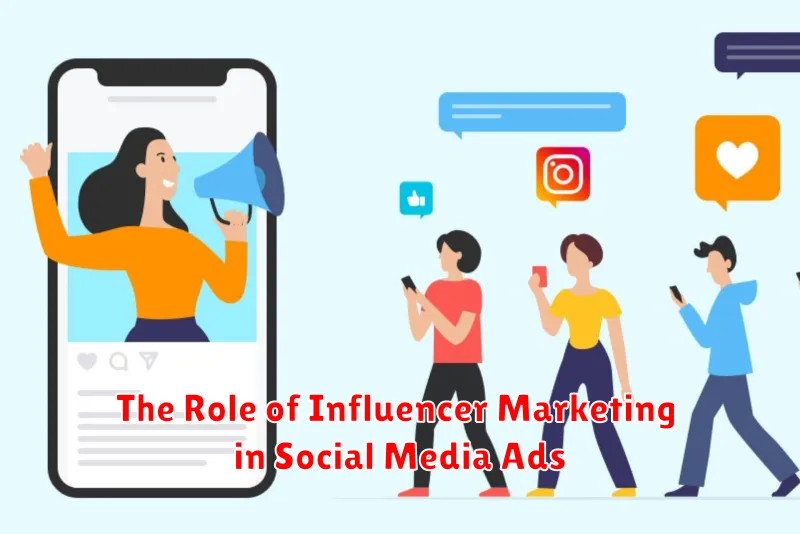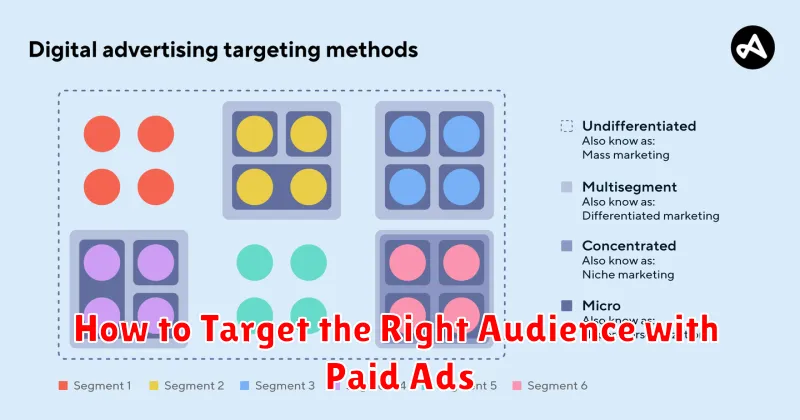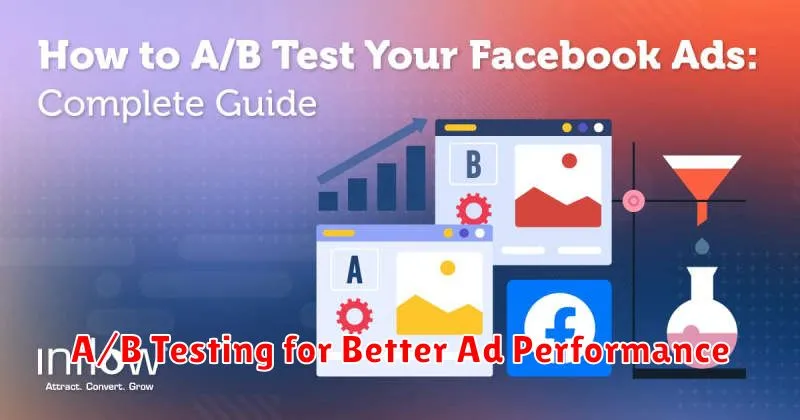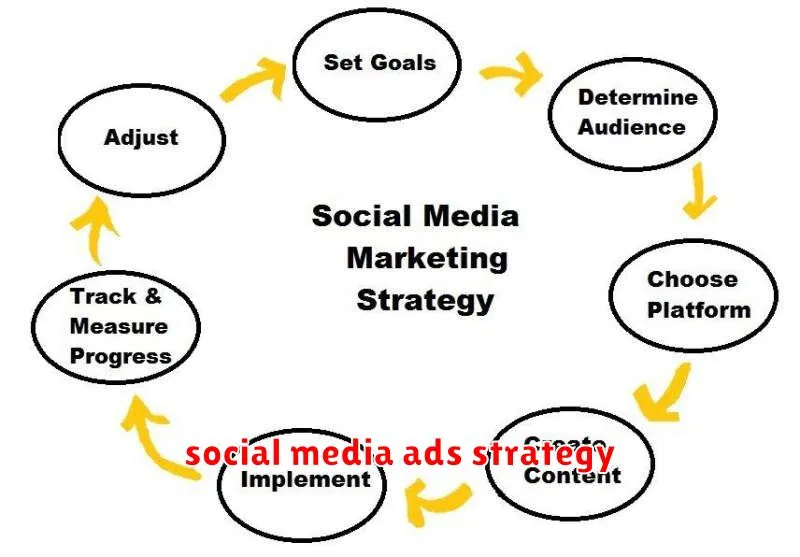Are you struggling to achieve a high return on investment (ROI) from your social media advertising campaigns? This comprehensive guide will equip you with the essential strategies and tactics to maximize your ROI. Learn how to effectively target your audience, optimize your ad creatives, track your campaign performance, and ultimately generate a significant return on your social media advertising investment. Discover proven techniques to improve your social media ad effectiveness and achieve your business objectives.
Choosing the Right Social Media Platforms

Selecting the right social media platforms for your advertising campaign is crucial for maximizing your ROI. Different platforms attract different demographics and offer unique advertising features. Careful consideration of your target audience and campaign goals is essential.
For instance, Facebook offers broad reach and detailed targeting options, making it ideal for reaching a wide audience with specific interests. Instagram, with its focus on visuals, is perfect for brands showcasing products or services with strong aesthetic appeal. LinkedIn is a powerful tool for B2B marketing, connecting with professionals and businesses in specific industries.
Twitter excels at real-time engagement and quick news dissemination, while TikTok is a rapidly growing platform best suited for younger audiences and engaging video content. Consider the platform’s user base and its alignment with your brand’s voice and message. Analyzing competitor strategies on various platforms can also inform your decisions.
Ultimately, the most effective approach might involve a multi-platform strategy, carefully allocating budget and resources to the platforms most likely to yield the highest return on investment. Regularly monitor your campaign performance across each platform to optimize spending and refine your strategy for continued success.
How to Create Engaging Ad Content
Creating engaging ad content is crucial for maximizing your social media ROI. Focus on crafting compelling narratives that resonate with your target audience. High-quality visuals are essential; use eye-catching images or videos that immediately grab attention. Keep your messaging concise and impactful; avoid lengthy text blocks.
Strong calls to action (CTAs) are non-negotiable. Clearly direct users on what you want them to do (e.g., “Shop Now,” “Learn More,” “Sign Up”). Use strong verbs and create a sense of urgency to encourage immediate action.
Target your audience effectively. Utilize social media platform features to ensure your ads reach the right demographics and interests. Personalization is key; tailor your messaging to specific audience segments for better engagement.
A/B testing is vital. Experiment with different ad creatives, copy, and targeting options to identify what performs best. Continuously analyze your results and optimize your campaigns based on data-driven insights.
Finally, maintain brand consistency. Ensure your ad creatives align with your overall brand identity and messaging. A cohesive brand experience enhances recognition and trust.
The Role of Influencer Marketing in Social Media Ads

Influencer marketing plays a crucial role in maximizing your return on investment (ROI) for social media advertising. By partnering with influencers who align with your brand and target audience, you can leverage their established trust and credibility to reach a wider, more engaged audience.
Influencers can significantly increase the reach and visibility of your social media ads. Their followers are often highly engaged and receptive to recommendations, leading to higher click-through rates (CTRs) and conversion rates. This organic reach complements paid advertising efforts, improving overall campaign effectiveness.
Furthermore, influencer marketing enhances brand awareness and builds stronger customer relationships. Authentic endorsements from trusted figures build consumer trust and generate positive brand sentiment. This can lead to increased brand loyalty and repeat business, resulting in a higher long-term ROI.
However, selecting the right influencers is vital. Consider their audience demographics, engagement levels, and alignment with your brand values. Measure campaign performance using key performance indicators (KPIs) such as reach, engagement, website traffic, and conversions to optimize your strategy and ensure maximum ROI.
Using Facebook and Instagram Ads for E-commerce
Facebook and Instagram, both owned by Meta, offer powerful advertising platforms specifically designed for e-commerce businesses. Their vast user bases and detailed targeting options allow for highly effective campaigns.
To maximize ROI, begin by clearly defining your target audience. Utilize the platforms’ robust targeting capabilities to reach specific demographics, interests, and behaviors. This precision ensures your ads are seen by the most likely customers.
Compelling visuals are crucial. Use high-quality images and videos that showcase your products attractively. Keep your ad copy concise, focusing on the unique selling proposition (USP) and a clear call to action (CTA).
A/B testing different ad creatives, targeting options, and bidding strategies is essential for optimization. Regularly monitor your campaign performance, analyzing key metrics such as click-through rates (CTR), conversion rates, and return on ad spend (ROAS).
Consider using dynamic product ads (DPAs) to retarget website visitors who showed interest in your products but didn’t make a purchase. This personalized approach significantly increases conversion chances.
Finally, integrate your Facebook and Instagram ads with your overall marketing strategy. Use consistent branding and messaging across all channels to reinforce your brand identity and build customer loyalty.
How to Target the Right Audience with Paid Ads

Targeting the right audience is crucial for maximizing your return on investment (ROI) in social media advertising. Wasteful spending is avoided by focusing your ad budget on users most likely to engage with your product or service.
Begin by defining your ideal customer profile (ICP). Consider demographics (age, gender, location), interests, behaviors (online activity, purchase history), and psychographics (values, lifestyle). The more detailed your ICP, the more effective your targeting will be.
Leverage the built-in targeting options of each social media platform. Utilize demographic targeting, interest-based targeting, and behavioral targeting features to reach your specified ICP. For example, target users who have shown interest in related products or who frequently visit competitor websites.
Utilize custom audiences for more precise targeting. Upload existing customer lists (email addresses, phone numbers) to create lookalike audiences—users who share characteristics with your existing customer base. This is especially effective for retargeting campaigns.
A/B test different targeting options to optimize campaign performance. Analyze results to refine your targeting strategy, focusing on the audience segments that deliver the highest conversion rates. Regularly review and adjust your targeting parameters based on data-driven insights.
By implementing these strategies, you can ensure your paid ads reach the most receptive audience, significantly increasing your chances of achieving a strong ROI on your social media advertising efforts.
Budgeting and Bidding Strategies for Paid Campaigns
Effective budgeting and bidding are crucial for maximizing ROI in social media advertising. Start by defining a clear budget aligned with your overall marketing goals. Consider allocating funds across different campaigns based on their potential return on investment (ROI).
Choose a bidding strategy that suits your objectives. Cost per click (CPC) bidding is suitable for driving traffic and engagement, while cost per mille (CPM) is better for brand awareness. Automated bidding options offered by platforms like Facebook and Instagram can optimize your campaigns, but require careful monitoring and adjustments.
A/B testing different budgets and bidding strategies is vital. Experiment with variations to determine what yields the best results for your specific audience and goals. Regularly analyze your campaign data, tracking key metrics like click-through rates (CTR), conversion rates, and cost per acquisition (CPA) to identify areas for improvement and optimize your spending.
Remember to scale your successful campaigns while phasing out underperforming ones. Continuous monitoring and adaptation are key to maximizing your return on investment in social media advertising.
A/B Testing for Better Ad Performance

A/B testing is crucial for maximizing your return on investment (ROI) in social media advertising. It allows you to compare different versions of your ads—testing variations in copy, images, targeting, and calls to action—to determine which performs best.
By systematically testing these elements, you can identify what resonates most with your target audience, leading to higher click-through rates (CTR), lower cost-per-click (CPC), and ultimately, a better ROI. Focus on testing one variable at a time to isolate the impact of each change.
Key aspects to A/B test include: headline variations, different imagery, varied ad copy lengths, and various calls to action (e.g., “Shop Now” vs. “Learn More”). Analyzing the results will provide valuable insights into your audience’s preferences and guide future ad campaigns for optimal performance.
Remember to run your A/B tests for a sufficient duration to gather statistically significant data before drawing conclusions. This ensures you’re not making decisions based on anomalies. Consistent testing is key to ongoing ad optimization and maximizing your social media advertising ROI.
How to Track and Improve Your Social Media Ad ROI
Tracking your social media ad ROI begins with setting clear goals before launching any campaign. Define what constitutes a successful conversion (e.g., website visits, lead generation, sales) and track these metrics diligently.
Utilize the built-in analytics provided by each platform (Facebook Ads Manager, Twitter Ads, etc.). These tools offer valuable data on impressions, reach, engagement, and conversions. Pay close attention to key performance indicators (KPIs) like click-through rate (CTR), cost per click (CPC), and conversion rate.
A/B testing is crucial. Experiment with different ad creatives, targeting options, and bidding strategies to optimize your campaigns. Analyze the results to identify what works best and refine your approach accordingly.
Regular monitoring and analysis are essential. Track your KPIs consistently and adjust your campaigns in real-time based on performance data. Don’t be afraid to pause or adjust underperforming ads to maximize your budget’s efficiency.
Beyond platform analytics, consider integrating third-party tracking tools to gain a more comprehensive view of your ROI. This could involve using CRM software or analytics platforms that provide deeper insights into customer behavior and attribution.
Finally, retargeting is a powerful strategy for improving ROI. Engage users who have previously interacted with your ads but didn’t convert, leading them back to your website or product.

